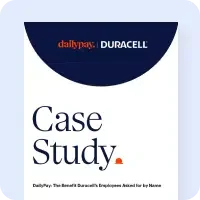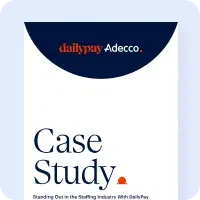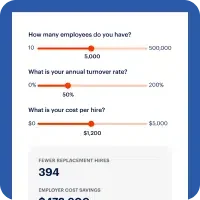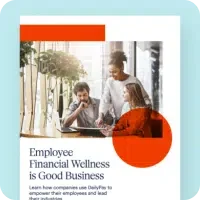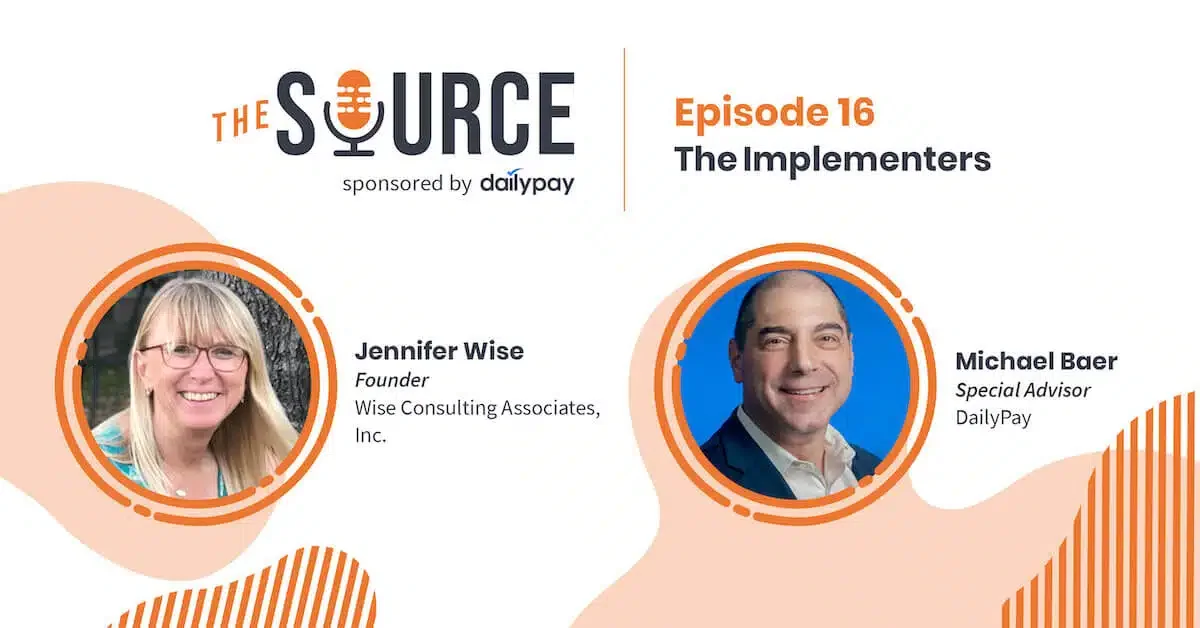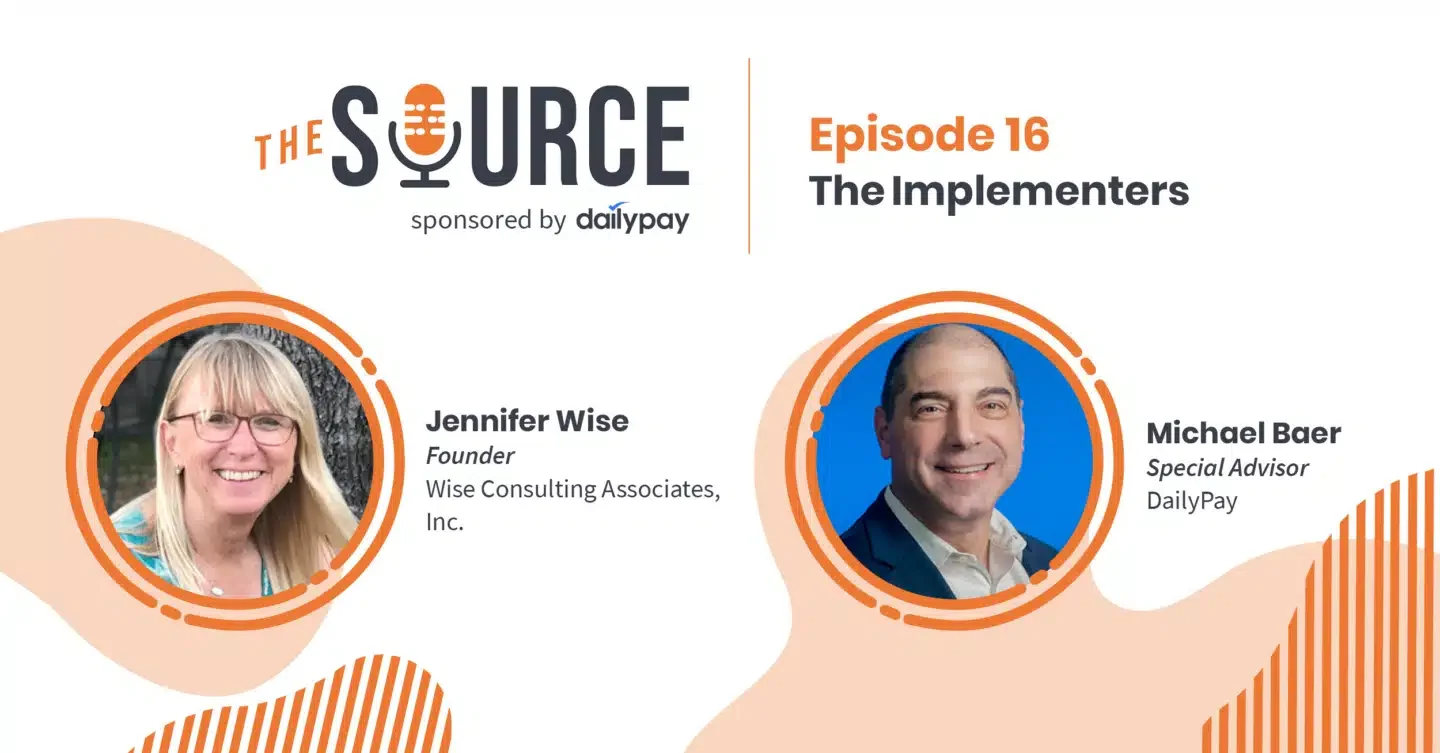Critical to the success of any well-known HCM or payroll system solution is how well the integration of new processes and procedures goes for the client company. Often overlooked is the role that approved businesses, brought in to make the transition to that new system happen, play. Hear firsthand from the founder of one of these groups, Jennifer Wise of Wise Consulting, about the keys to getting an implementation right the first time, and avoiding that costly failed attempt.
About Our Speakers

Jennifer Wise founded Wise Consulting Associates, Inc. in 1996. After holding senior-level positions at various HCM software and consulting firms, Jennifer launched Wise Consulting to provide independent expertise for targeted Human Capital Management and Workforce Management solutions. Jennifer led the growth of Wise Consulting from three employees to more than 90 employees, leading by example with positivity and a commitment to always doing the right thing for clients.
In 2016, Jennifer transferred ownership of the company she founded to all Wise Consulting employees, establishing a 100% employee-owned ESOP (Employee Stock Ownership Plan). Jennifer retired, after 25 years, in January 2021.

Michael Baer is the host and executive producer of The Source podcast. Michael previously oversaw domestic and international payroll news and analysis at Bloomberg Tax, previously BNA.
In a career spanning three decades, Michael transformed the role of managing editor, becoming an information services leader who managed every aspect of world-class global products and platforms, while continuously increasing revenue and achieving market-best customer satisfaction. He directed a team of editors and writers who were charged with translating complicated tax and labor laws into English so non-lawyers could easily understand and apply them, and was integral in organizing and placing that content on easy-to-access web platforms, resulting in the highest net promoter scores the company had seen for any of their offerings.
Michael has been a frequent public speaker for conferences and webinars, and now is the host of The Source, sponsored by DailyPay. Michael joined the DailyPay team in 2019.
In this podcast you will learn about…
- The critical importance of a successful HCM system implementation on a business
- Red-flag issues that can come up in the process of system transitions
- The unique set of skills consultants need to bring to the project
- The impact that technology changes have on HCM and payroll system implementations
Welcome to The Source, the definitive destination for timely and informative regulatory updates and issues in the on-demand pay industry.
The Source is brought to you by DailyPay, the industry leading provider of the DailyPay benefit and pay experience.
This material is for general information only and the views expressed herein reflect only the views of the participants.
This program should be considered marketing material and should not be relied on as legal, tax, accounting or regulatory advice.
And now, let’s welcome our host, Michael Baer.
Michael Baer: Hello, everyone, and welcome to The Source. The Source is sponsored by DailyPay and it provides insights into active and upcoming legislation and other issues revolving around the on-demand pay industry, HR, payroll, and financial technology. And with special guests, we help clarify issues surrounding access to pay and the pay experience.
Today, we are featuring an aspect of human capital management that I think is too often overlooked by employers when they choose to transition to a new HCM or payroll system. It’s the implementation part. And many listeners I know are aware how critical this part of the process is to the success of any system you choose. When it works, that’s great, but when it doesn’t, it can be a disaster. And a lot of times, it doesn’t even matter whether it’s a very reputable organization that sold the system. It’s the implementation part that made it not work well.
With me today is Jennifer Wise, and she’s the founder of Wise Consulting, a firm that specializes in helping employers with these transitions and beyond. Her company is celebrating its 25th year in business, and Jennifer just recently, and congratulations, stepped down as the CEO and owner, selling the company to its employees. Congratulations and welcome, Jennifer.
Jennifer Wise: Thank you, Mike. I appreciate that. I’m happy to be here.
Michael Baer: Yeah. Let’s get started then. So just to begin, what inspired you to start a business like Wise Consulting. How did you identify the need in the market for the services you provide?
Jennifer Wise: So 25 years ago is a long time ago. You’re pushing me to the way back, but I had had some positions, both in another consulting company and also with a vendor. And I did see that the clients, our customers, a lot of times needed support that was really beyond the capability that they had internally or what the vendor could offer to them.
So I had the opportunity in 1996 to go out on my own and just offer these services directly to the clients. And I felt that being part of their team really empowered them to make the most of the investment that they had made in their software solution.
Michael Baer: Super. Okay. Well, and getting kind of to the point that I raised at the beginning, at the intro, myself and many others listening to this podcast, we’ve witnessed firsthand bad implementations of new HCM and payroll systems. It really keeps people up at night, especially when the transition takes place and the new system is about the switch on. We hear and see stories as well about while the client has maybe purchased a good and reputable software or system, the implementation unfortunately just was a failure. What are some of those what I would call, I guess, red flags, so to speak, that your group watches out for when going in to help get a client set up properly on one of these platforms?
Jennifer Wise: So it’s very true, Mike, that the implementation is probably even more critical than the software itself that is chosen. Initially we weren’t even involved in implementation. It was just really in post-implementation support. But then we had the opportunity to partner with a couple of leading vendors and we dove further into the tasks that were involved in converting to a new system.
Now, one of the things about HCM solutions is that it’s extremely visible across the organization. So it impacts absolutely every single employee. A lot of times when we’re doing testing, it’s like, “Well, let’s make sure that the CEO’s pay is right,” but we really care about every person’s pay being right?.
Michael Baer: Yeah, but you don’t want to mess up the CEO.
Jennifer Wise: No! Or the VP of finance or the payroll manager. We want to make sure all those are right. So that’s very critical.
But you say, “Well, what could go wrong?” Because obviously just like the start of any new relationship, there’s stars in our eyes and everybody’s very excited. They went through, more than likely, an extensive selection process to find the system that they thought would be perfect for them, and then lo and behold, four months, six months, a year later, it could even be longer and there are problems.
So one of the things that we see, you asked about red flags, so one of the things we is when the client does not take the time to analyze their requirements against the capabilities of the software itself. So what that means is that there’s a rush to just take the data and convert it and just load it into the new system, and what happens is that the data just is forced into the system in a way that’s structured exactly the same as it was in the old system.
So it could be that that structure or that data… And by structure, what I’m talking about is primarily the organization structure, so how are you set up, companies, divisions, departments, functions, regions, the stuff that seems very mundane and very common and you think, “Why is this so critical?” Well, first of all, each solution ties many, many things to that organization’s structure. It could be self-service workflow. It could be security. It could be the whole thing about granting permissions.
And so what we find is the biggest reason that we would get called in to fix a bad implementation would be that the organization’s structure didn’t fit the objectives of what they wanted post-implementation for reporting and for, in particular, workflow.
So if you’re not taking the time to analyze that upfront and what you’re doing is just forcing your current data into the new system, you’re already started down a path that is probably going to cause you problems at the end of the day. So that’s kind of one of the big things.
Michael Baer: That’s beyond just your simple fit gap analysis, right? That has to go beyond that because the fit gap is really the copy and paste of what you have to the new one.
Jennifer Wise: Right. So that’s where a lot of times during the vendor selection process, that’s what you’re looking at. Can it do the calculations that I need? Does it have the capabilities to fulfill the vision that I have? Can it handle our various eligibility rules that we have, our various compensation systems? So can it handle it? That’s the fit. That’s where it’s like, well, if it can’t, well then we call those strikeouts. It’s like, well, if you can’t handle these things, we’re not going to continue to talk with you.
So you know it can handle it, but there’s so much more to it once you start loading your data into it. Because these systems are built to be very, very flexible because they work for organizations of all type, of all size in all industries. So what makes it is your own company’s individual structure and setup.
So that’s a big part of it. And so what that implies is engagement from the client and very knowledgeable people on the project team, very knowledgeable, and they need to be pretty dedicated to this project. And so if they’re not, if they still have their day job, they’re trying to fit this in, a lot of times that’s probably another one of our big red flags.
So we’ve found as consultants that we would do everything we could to help our client’s team maximize their efforts when it came to what we needed from them specifically, but another way we helped was backfilling the job that they had. We might send somebody in to be the interim payroll manager. We might send somebody in to be an interim benefits manager so that those people, because they’re the ones that are going to be living with the system post-implementation, they’re there from the beginning and can really work on it. When you combine those two things, then already we know that this client is headed toward a great result.
Michael Baer: Yeah, you had mentioned to me earlier about how important it is that the client recognizes just how much effort they are basically required to do. It’s not like the HCM service provider is going to come in and just plug and play the system in there and all of a sudden you flip the switch and it’s working just beautifully. There’s so much that goes beyond it that you were telling me that clients don’t recognize sometimes that it’s not a plug and play solution all the time.
Jennifer Wise: And how much work is theirs, and that is so true. Because during the sales process, the vendors are somewhat reluctant to spell out all the responsibilities and effort that’s required from the client. And it’s not that they’re trying to be deceitful in any way. It’s that if they kind of lay it out, the reality, and the competitors don’t, then they can be at a competitive disadvantage, when in fact, it’s really just providing their prospect with the best information so that they can plan to be successful.
But there is a lot of work that is on the client. The vendor is just really there to guide, to provide information, not necessarily advice, some advice, but mostly information, and then to handle some of the more technical aspects, like building the integrations or actually doing the data conversion. But when it comes to testing, when it comes to even identifying testing scenarios, I mean, there’s many, many tests that are on the client side, but it’s so worth it because at the end, then you have that confidence, and as you had said, you’re not losing sleep the night before go live. You’re feeling good about it. Then it’s so worth it and really critical.
But that’s why partnering with a consulting team, and a lot of times what we call that was client side, a client side project, partnering with a consulting team that’s been down the path before, that understands your business, understands HR and payroll from the inside with practitioner experience is great, but that they’re there, the consultants are there to make sure that they’re filling in these gaps, helping you out when it’s just impossible for you to find more hours in the day, and really laying out all those tasks to give you that comfort level.
Michael Baer: Okay, that’s great. And that’s very interesting. And one of the things that struck me is how important the communication process is between they’re bringing you in as a go-between the vendor and you need to build these trusting relationships with those you’re helping on the client side. And I think you alluded to one factor, one major factor as to how you can do that, and one of them was that you bring in people who have the practical experience, on the ground experience. But how do you guard against these red flags when you’re starting to work with a client and how do you foster that good communication that’s necessary for this to be pulled off successfully?
Jennifer Wise: Good question. So it really does start with building rapport and having trust with the client. And there’s several levels to that. Because sometimes, you were saying fostering communication and being the liaison, so sometimes it’s between the client and the vendor, making sure that the vendor understands what the specific nuance or complexity is of this client, and that the solution that is developed comprehensively will in fact be reasonable, maintainable, all that other kind of stuff.
But another level of communication a lot of times is internally. So, so often hear about HR and payroll, they don’t communicate, right? Well, they certainly need to work together on this project, but it’s also different levels within the organization. So sometimes what we’ve found as consultants is there may be someone that’s on the project team that has recognized a deficiency in the current system or has recognized roadblocks or wants to push the organization forward to take more advantage of technology, to adopt some of the new capabilities of features. On-demand pay is certainly one that a lot of times there’s resistance.
So there are a lot of these kinds of features and there are people on the project team that are excited about it, have great ideas, but they need help selling their ideas within their own organization. And it’s sad, but true, consultants coming in from the outside sometimes have more credibility with others inside the organization. And we’re certainly not ones to steal ideas from people, but the whole thing there is to support them to advance these ideas and these concepts and to move the organization forward to make the most of this new solution. And so by facilitating those discussions or by offering our opinion about the value of that, then it can help other people on the project team to get those ideas pushed through and adopted.
Michael Baer: And you all can be certified by the vendor as a consultant who can do these implementations. You all know these HCM systems through and through, and so you can help bridge that gap, that knowledge gap between the client’s knowledge of the system and what it can do and what the HCM provider or payroll service provider can do to help that could be leveraged even further, right?
Jennifer Wise: It totally is. So we always felt that we needed to know the software and as well as if not better than the vendor. And so that way, we could make the best help our clients make the best decisions about how they were going to, in particular, get it set up to take advantage of the features and make it easy to maintain.
So, yes, just about every vendor has a certification process, and what it means is that the consultants are able to attend classes and have access to the knowledge base and have access to experts and specialists from the vendor on behalf of the client. So it is a powerful thing to be a certified consultant. On the other hand though, book learning by itself is really not enough. And so that background, that practitioner background in HR and in payroll and in benefits and on the technical side, that certainly is something that can be available from a consulting firm that’s not necessarily a certified implementation partner.
So it depends what the client is looking for to supplement their team. When you find both in the same organization, that’s a big win, but clearly I would feel that that understanding of the function and the purpose and the requirements on the functional side for HR and payroll probably is more important than understanding the software itself, but being certified does open the door to a lot of additional resources that the consultants can use as well.
Michael Baer: Super. And it brings to mind the fact that you all, there’s like two-way communication. You’re communicating with the client, helping to educate, but then you’re also bringing some concerns and issues back. You can be one of those conduits, so to speak, for issues or ideas for leveraging the system that you’re implementing. Is that right?
Jennifer Wise: Yes, that’s totally true. So clearly we can even escalate within a vendor over the project team because we have access to those people and it’s not something that an internal, the internal vendor or project team could do easily if they’re running into some kind of roadblock internally on behalf of the client. So we can escalate.
Another thing we can do is connect the client to other clients that have had similar issues, similar challenges, to hear about their approach, what they did for their workforce. I mean, I mentioned on-demand pay, but clearly putting more power in the hands of the employees is a big competitive advantage. So to have apps for things like recording your time, for scheduling, for like shift swapping, things like that that make an employee feel like they are in control of their work world, clearly open enrollment and life event changes and all that. Nobody wants to make a phone call. Everybody, everybody wants to do everything online.
And so by having those features available and understanding that, again, by connecting clients together that have had that experience, have rolled it out to an hourly workforce, have gotten away from clocks or have put in a different kind of clock, went to biometric or something like that, just all that, whenever they’re undergoing change, of course that communication, not just among the vendor and the client and the client project team and senior leaders, but to all the employees to help them understand what’s happening, minimize the impact, to get ideas like that from other clients, to hear what they did and what was so successful is clearly something that a consulting team can enable and facilitate.
Michael Baer: And I think you kind of stole my thunder on the next question because I was going to move away from some of these collaborative skills and the involvement of your team with both the client and the vendor, but to move into something that’s more near and dear to us at DailyPay, which is handling technological changes that continue to be introduced at this frenetic pace right now. I think you touched a bit on some of that now, on some of the applications that you all are supporting clients in adopting. What are the signs like for on-demand pay that a particular approach is being adopted successfully and maybe coming into the mainstream?
Jennifer Wise: What are some of the signs? Well, lack of complaining. We have a thing, we have a thing where we say, “Get the noise down.” It’s like, all right, if you’re not hearing anything it’s successful. That’s a good thing because they’re probably not going to call you and say, “Great job.” I really like that.
But there’s other actually analytical components to measuring success, and probably turnover is one of the biggest ones. If people are sticking around longer than usual, that’s because you’ve done something to make their life easier, assuming that they like their job and their boss because those are the two big things.
Another thing is referrals, employee referrals. If they’re telling their friends to come and work there, I’d say that’s another very good measure of success of some of these, I think what we’re talking about is employee enablement types of technologies and tools. It’s always good to make life better for the payroll department or for approving time cards and for managers and all that, but at the end of the day, it’s really about the workforce. And I think there’s more and more of these applications that are being either embedded or are available as tightly integrated solutions that are really aimed toward that, aimed toward improving the employee experience.
Michael Baer: Okay. Well, I think we can talk now. Again, we’re kind of moving in this direction based on your comments because the economy is opening up now after this prolonged pandemic period and employers are struggling to hire and retain employees and many are dealing with coming off required remote work, among other issues. So the workplace has already been changing in a number of ways, demographically, for instance, and in the technological area. Now it’s really changing, but what are some of the attributes of the newer ways we’ve been adopting to get our work done that will stick? What do you think will not stick? And how do you see an organization like yours addressing these issues in conjunction with, we know the HCM and the service providers are well aware of a lot of these issues and are striving to provide tools for their clients to resolve these things, but how do you see an organization like yours being a part of resolving some of these issues of the changing workplace?
Jennifer Wise: Well, if I learned one thing 25 years in consulting, it’s that each and every company is unique, and I think that’s what kept it so interesting for me for so long. Even though you go in and you more or less are talking about the same thing, the culture, the environment, the competitiveness of the industry, there’s just so many factors that make each and every organization unique.
So last March, March of 2020, I shouldn’t just say last March because somebody could be watching this podcast in 2022, but anyway, in March of 2020, every organization went through a big shock, and thank goodness that there were capabilities that were available to keep people as connected as possible. I mean, we at Wise had just, literally just rolled out Microsoft Teams and it saved us because just talking on the phone, conference calls, it really wasn’t enough, but being able to see people and have group conversations and all that, that was huge, and obviously Zoom was a big, big thing on education and everything else.
Is that something that’s going to be sustained? Probably for some companies I would think yes, and having remote work. I think that a lot of people realize that you can, in fact, trust people to work at home. They still get their job done. I think there were a big resistance on for… We saw a lot of places.
But when it comes to anything else, I think that now it’s a good time for organizations to step back and say what should become part of our ongoing culture? What could we improve upon with that? How do we want to offer flexibility to employees that want to return to the workplace, that have to come into the workplace? Obviously our whole first responders and frontline workers, let alone manufacturing and so many other people, they can’t work remote [inaudible 00:28:29], and they were at the biggest risk for so long.
So I think that when it comes to technology and what can help, that it really has to be addressed pretty much uniquely, and having a trusted consulting firm to get with those people that are assessing things at this time will at least allow the organization to focus on what did we do to immediately respond that maybe could be improved or that maybe we don’t want to do anymore, and then what else are we willing to invest in to really make a difference for our employees long-term. It’s hard. It’s hard to know. Yes.
Michael Baer: Yeah. I guess what I’m hearing here is that you’re basically saying each organization is going to deal with it differently probably because of the way they are already set up. And they’re going to have to modify their culture, but whatever their culture was was already unique and they’re going to have to address the changes in their own unique ways. There’s no real kind of like standard approach for what to continue and what not. Is that what I’m hearing?
Jennifer Wise: And I think they need to listen. They need to listen to the employees. What do they want? Do they feel safe? I mean, everybody I know has a different opinion about how to deal with this emergence.
And so, I think that they do have to listen to the employees. So they have to have a way of communicating with them to understand. And then, if they say what did I struggle with, I struggled with, with not feeling connected or I struggled with feeling out of control of my schedule, or it could be it could be anything depending upon the organization and the industry. And then, okay, can technology help that? A lot of times it is just listening to people and having resources available for them, but hey, if technology can help with that, make it easy to make changes online, make it easy to get answers when they have time in the middle of the night to try to get answers, to understand policies, to ask questions and all that, then whatever can make it easier for the people. If technology can help, then I’d say, hey, you owe it to them at this point to do everything that you possibly can to help.
Michael Baer: And I think one of the things that struck me in what you just said and what you said earlier is that the, I don’t know if we can quite label this as such, but I’m going to anyways, kind of like there’s more empowerment of the employees now with the technological applications. And by empowering your employees with tools like on-demand pay or these other self-service items, you are at a competitive advantage and you are creating a culture that is… Kind of post-pandemic culture is one that is listening to these employees and what their desires are. Because we’ve seen whole swaths of industry really dealing right now with how to attract workers back into their operations, and I think we’re really seeing right now kind of a cycle of employee empowerment that’s happening. I don’t know what your thoughts are on that.
Jennifer Wise: Yes. I mean, when you look at employee satisfaction across the board, having control and feeling that people are trusted is huge, a huge part of satisfaction. And how better to show that you trust your employees than to listen to them, understand if they say that this is how they want to continue to work or if they can’t continue to work this way, or whatever it is, that they’re trusted. And then now you have that loyalty and commitment. And it really is critical because we certainly know that people are dealing with a whole lot more than just their workplace that has changed.
And we’re definitely not through it yet. And there’s so many various differences of opinion that you try to leave out of it when it comes to work and try to find a common denominator. But really, the common denominator is listening to employees and respecting them I think.
And so if you could do something to help that with technology, whatever that may be to enable them to not feel financially burdened or stressed by being able to control when they get their pay, which we were talking before about resistance. And I honestly have to say, when I very first heard about on-demand pay, and we being such specialists in payroll, the big thing was, “Well, how the heck is that going to work?” I mean, there’s taxes, there’s deductions, there’s garnishments, there’s remittance. There’s sending the money to all these places, like how the is that ever going to work? That’ll never work.
Well, lo and behold, all those obstacles were addressed and everybody has different circumstances. People do in fact want to get, sometimes, every single day, part of their pay. Sometimes they want to wait, save it all up. It depends. Everybody is unique. And so by taking that away that it’s every week or every other week or twice a month or once a month, or whatever it might be, taking that away means that we trust the employee to make the best decision for themselves and their family.
So I really think that that was a big lesson learned in the last year and a few months, was that we don’t need to be standing over people all the time to see what they’re doing, and that sometimes sometimes loosening up that kind of management in fact produces much better results and happier employees as well.
Michael Baer: Fantastic, Jennifer, and thank you so much. On that note, I think we’ll close, but thank you so much for offering your insight into this, the critical role organizations like yours play in the environment to help employers successfully implement HCM and payroll systems and help attract and retain employees too at the same time with those systems.
Jennifer Wise: Well, I just want to kind of summarize and go back to the beginning of why we put this call together, and it was about implementation of new software. And so back to the whole implementation of new software, just keep in mind that when you have a consulting team that you’re working with, they are people that are really part of your total project team.
So you can count on them, ask them to do anything. We used to say we’ll sweep the floors if that’s what our clients need us to do, but in reality, rather than skipping a step or pushing, which happens so, so often where you miss a deadline, and with payroll systems, a lot of times it’s first of the quarter is when you go live, so rather than running into challenges like that, if you start off by having a consulting team, and then you find out, “Hey, we can handle this on our own and we could be independent,” you can cut back what it is they’re doing, but you know you’re starting out on the right path.
So I would just say that clearly knowing how visible these projects are across the organization, that it certainly is worthwhile to have that conversation and to consider hiring a great consulting team to help you and your project team.
Michael Baer: All right. Super. Well, thanks again, Jennifer. And I want to thank our listeners for joining us today at The Source. It is sponsored by DailyPay, and you can get information here and analysis of developments related to pay experiences at dailypay.com. And look for the podcast page on that site. We are also available on Apple, Spotify and Google Podcast platforms.
So, stay healthy and safe. Keep an eye out on your emails and social media as we will have another compelling issue along with updates very soon. Thank you very much and have a great day.
Thanks for attending The Source, brought to you by DailyPay. Join us again next month for up-to-date insight on on-demand pay and pay experiences. Keep an eye on your inbox for more information regarding featured guests and new topics.

